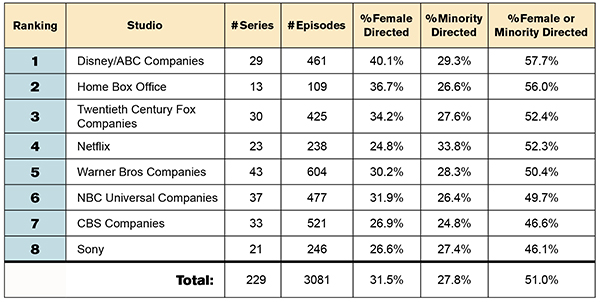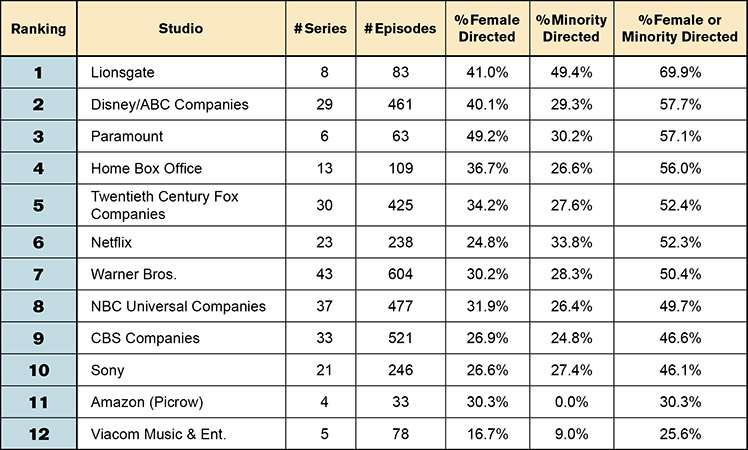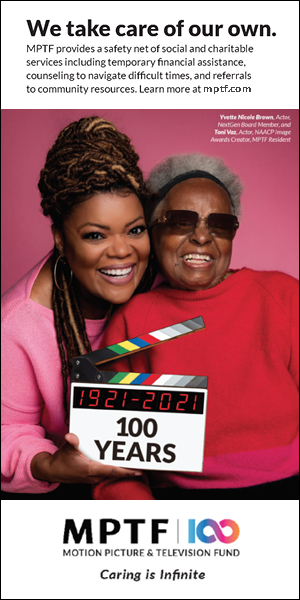LOS ANGELES – For the first time, half of all TV episodes were helmed by women or directors of color, the Directors Guild of America revealed today in its latest Episodic Television Director Inclusion Report covering the 2018-19 season. That number was up from last year’s prior high of 42.5%, and from 21% just five years ago[1].
Further breaking down the data in the table below, the percentage of episodes directed by women grew to a record 31%, more than doubling in the past five years[2]; and the percentage of episodes helmed by directors of color rose to a new high of 27%, increasing more than 40% in the past five years.
“Inclusion has been a priority of our Guild for a very long time as we’ve pushed the studios, networks and producers to do better in their hiring,” said DGA President Thomas Schlamme. “While change had been glacial in past years, we’re pleased and incredibly encouraged to see the recent commitment undertaken by the industry.”
For the report, the DGA examined over 4,300 episodes produced in the 2018-19 television season. That number was down from just over 4,400 episodes the season before and represents the second consecutive year of declines following an all-time peak of roughly 4,500 episodes in the 2016-17 season. According to the DGA’s analysis, main drivers of the decrease include the ongoing decline in the number of basic cable dramatic series, coupled with the overall trend of short orders (fewer series episodes per season).
First-Time Directors
In recognition of the critical role first breaks play in launching careers, the DGA has also been tracking and reporting publicly on trends in first-time TV director hires for the past decade.
In the 2018-19 season, employers hired 227 directors who had never directed episodic television. The percentage of these first breaks going to women directors hit a new record, while the percentage going to directors of color remained static, but close to its peak level:
- 49% of first-time hires in the 2018-19 season were women – an increase from 41% in the 2017-18 season, and 33% two seasons prior.
- 29% of first-time hires were directors of color – down slightly from last year’s record of 31%, but up from the previous high of 27% two years ago.
Impact of Insider ‘Perk’ Hiring
Despite the recent progress, the DGA’s long-term analyses have repeatedly shown that most first-time directors don’t move on to develop directing careers. The Guild’s research found that the key driver behind that drop-off is the widespread and growing practice of employers giving ‘perk’ directing assignments to series insiders – i.e. those employed on a series in another capacity – who are far less diverse as a group than non-affiliated directors, and who have infrequently gone on to have a career in directing. The DGA’s studies following the career paths of first-time directors over the past decade have found that less than a quarter of series insider hires developed directing careers, compared with nearly three-quarters of hires not affiliated with a series. In spite of those findings, employers still hired insiders for 55% of the first-time TV directing jobs last season.
“Producers hold in their hands the power to grant an opportunity that can set up an aspiring TV director for a lifelong career doing what they dreamed of,” said Schlamme. “And while we’re encouraged to see nearly half of first jobs went to women last year, and nearly a third went to directors of color – we still have a lot of concern over the underlying hiring practices that reduce the number of jobs available to budding and experienced directors alike. The heart of the issue is that producers aren’t factoring in that every job given to someone who does not pursue a directing career equals an opportunity withheld.”
Analysis & Ranking of Television Studios[3]
The eight largest[4] industry employers oversaw the production of 71% of the episodes covered in this report. Their hiring records follow.

Companies that oversaw the production of fewer than 100 episodes were not included in the above ranking, as hiring patterns were less conclusive since a few episodes or a single series could swing percentages far into one direction or another. The most recognizable of those studios that were not included in the ranking were Lionsgate, Paramount, Amazon and Viacom. See Appendix B for a ranking with these companies included.
The DGA has been pressing studios, networks, and producers to be more inclusive in hiring for nearly four decades. The Guild’s efforts include: collective bargaining gains requiring television studios to operate TV director diversity programs, and all first-time TV directors to attend a DGA orientation; ongoing meetings with studios, networks and individual series regarding their hiring records; and publicized reports detailing employer hiring patterns. In addition, the Guild itself has initiated a variety of TV director mentorship and educational programs to support the career development of its members.
For more information about the DGA’s diversity efforts, visit: /The-Guild/Diversity
Appendix A – 2018-19 TV Season In Comparison With Previous Year
Comparing figures for the 2018-19 season with 2017-18, this year’s report shows that:
- The percentage of episodes directed by Caucasian males decreased from 57% to 50%;
- The percentage of episodes directed by minority males increased from 17% to 19%;
- The percentage of episodes directed by Caucasian females increased from 19% to 22%; and
- The percentage of episodes directed by minority females increased from 6% to 8%.
Appendix B – Expanded Studio Ranking

The report analyzed the ethnicity and gender of directors hired to direct episodic television series across Broadcast, Basic Cable, Premium Cable, and original series made for Subscription Video on Demand (SVOD). Pilots are not included in the statistics. The DGA regularly refines its methodology for this annual report as new information becomes available. The Guild compiled the statistics in this report using internal information and information provided by production companies pursuant to the reporting requirements of its various collective bargaining agreements. All figures in this report are rounded to the nearest percentage or tenth of a percentage.
Footnotes
[2] In the 2013-14 season, 14% of episodes were directed by women and 19% of episodes were helmed by directors of color according to the DGA report covering that timeframe.
[3] This report tracks employment by television studios (production), as opposed to networks (distribution). Hiring decisions are primarily made by studios – even when they share the same parent company as a network which may have some approval of those decisions. Moreover, many studios also produce series for outside networks, and some studios are not affiliated with a network.
[4] For the ranking, the DGA examined employers that oversaw a minimum of 100 episodes for the 2018-19 season.
























